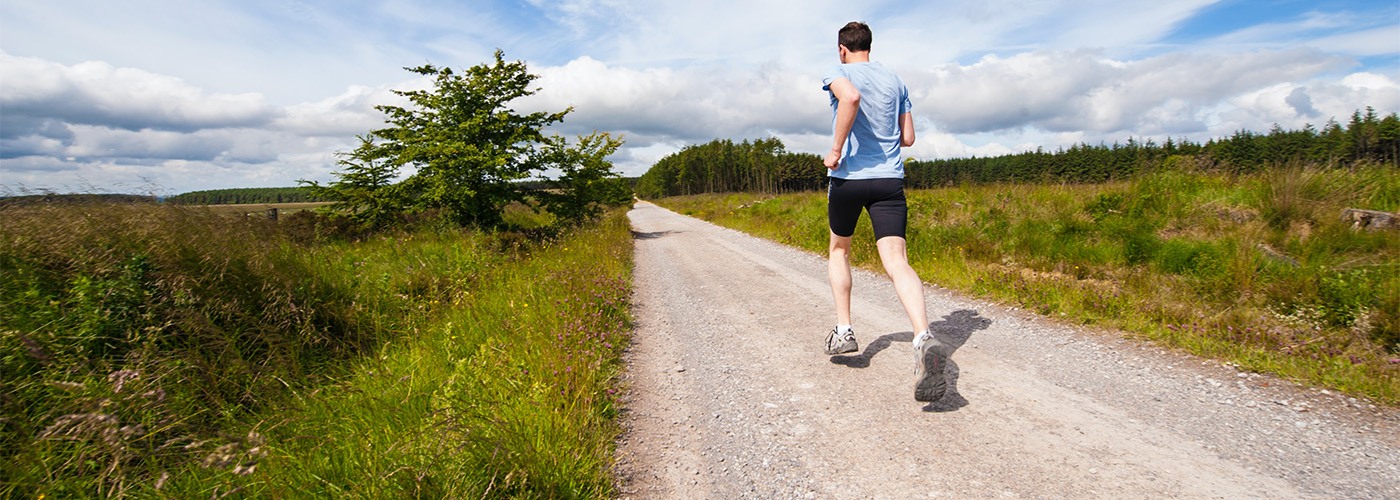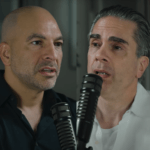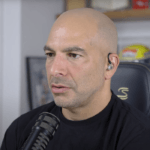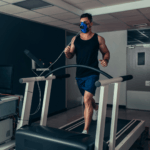In this special episode of The Drive, we have pulled together a variety of clips from previous podcasts about exercise to help listeners understand this topic more deeply, as well as to identify previous episodes which may be of interest. In this episode, Peter discusses his framework for exercise, what he’s really optimizing for, and how to train today to be prepared for a good life at age 100. He describes the importance of strength and stability, and why deadlifting is an important tool to consider for longevity. Additionally, he details why training in zone 2 and zone 5 is important, gives a primer on VO2 max, and describes the most effective ways to engage in those types of exercise. Finally, Peter reveals his current exercise routine.
Subscribe on: APPLE PODCASTS | RSS | GOOGLE | OVERCAST | STITCHER
We discuss:
- What is Peter optimizing for with his exercise? [3:00]; (from AMA #12)
- Preparing for a good life at age 100: Training for the “Centenarian Decathlon” [6:00]; (from AMA #5)
- The importance of preserving strength and muscle mass as we age [21:45]; (from AMA #27)
- The value of deadlifts for stability and longevity when done properly [27:30]; (from episode #103)
- The importance of zone 2 aerobic training [35:45]; (from episode #103)
- The most effective ways to engage in zone 2 exercise [40:00]; (from AMA #19)
- Zone 5 training and VO2 max [44:15]; (from AMA #21)
- A primer on VO2 max [52:00]; (from episode #151)
- Stability—the cornerstone upon which all exercise and movement relies [1:03:00]; (from AMA #12)
- Peter’s current exercise routine [1:07:45]; (from AMA #32)
- More.
What is Peter optimizing for with his exercise? [3:00]
From episode #92 – AMA #12: Strategies for longevity (which don’t require a doctor); discussed from [30:30] – [33:45]
Peter is looking at exercise through the lens of longevity, not performance
- The difference is important
- If your goal was to break 2 hours and 40 minutes on the Chicago Marathon next year, the training required would be totally different from that needed to maximize longevity
- Longevity is a very difficult performance goal
- When you start to look into the far recesses of amazing physical performance, training would be very specific for that
- This is not what Peter is discussing
- Training for this type of performance is generally not collinear with longevity and at times they can be outright orthogonal
- So this is the difference between something being in-line with (collinear) or at-odds with (orthogonal)
- Exceptional physical performances requires maximum cardiac output, just beneath VO2 max
- This level of performance and training puts an amazing strain on the body
- While this is better than sitting on the couch all day, it is past the point of optimizing longevity returns
- This comes at some longevity cost relative to training at a lower energy system
Why training for the “Centenarian Decathlon” is so important
- This podcast is geared toward this “Centenarian Decathlon”
“This is the idea of being the most kick-ass 90-year old possible”‒ Peter Attia
- This is based on 2 energy systems:
- 1 – Strength and stability
- 2 – Low-end aerobic energy system (which is zone 2, we’ll talk about that in a moment) which is punctuated with brief bursts of zone 5
- These energy systems matter because this is generally where life takes place
“Life is zone 1, zone 2, and zone 5”‒ Peter Attia
- By training in zone 2 and zone 5 (with much more focus on zone 2), we’re preparing metabolically and structurally for longevity
Preparing for a good life at age 100: Training for the “Centenarian Decathlon” [6:00]
From episode #50 – AMA #5: calcium scores, centenarian Decathlon, exercise, muscle glycogen, keto, and more; discussed from [18:15] – [33:45]
What does Peter wish he incorporated into his exercise at age 25 to be in this race for the gold medal in the “Centenarian Decathlon”?
- For most people, a system of the body is going to fail first
- Some people die suddenly when their mind and body are fine; they are an exception to this discussion
- For many people their mind fails first, cognition is taken from them and then eventually they die or their body breaks down
- For most people, the decline of mind and body, and the burden of disease occurs as the body fails first
- This prompted Peter to think about how to mitigate the decline / fail of the body
- He engaged in backcasting (instead of forecasting), to think of what he wants to do when he is 100 and work backwards from that to determine what to do today at age 45 (or any age)
- He borrowed the term backcasting from Annie Duke who wrote Thinking in Bets
- See episode #60 with Annie Duke
- This led to the question‒ What do I have to physically be able to do to be satisfied with my life at 100 years old?
- He thought about how old his kids would be when he is 100, and how old will their kids be
- He realized at this age, his grandkids will have kids
- When Peter is 100, he will likely have great-grandchildren that are between the ages of 1-8
What will Peter want to be able to do at 100 to be happy?
- He doesn’t want to be bedridden with disease
- He wants to retain his cognitive faculties
- There are lots of physical activities he want to be able to do
- Shoot a bow and arrow
- Exercise (he enjoys it)
- Activities of daily living are important
- Things he would want to do with his great-grandkids when they are 1, 3, 4, 5, etc.
- Be able to drop into a squat position and pick up a child that weighs 30 lbs
- Be able to get up off the floor using a single point of support, such as just 1 arm
- Be able to lift something that weighs 30 lbs over his head; this is about the weight of his carry-on suitcase
- Be able to get out of a pool without a ladder
- Be able to walk up 3 flights of stairs with 10 lbs of groceries in each hand
- He made a list of 18 things‒ this became his centenarian decathlon (even though a decathlon is only 10 things)
- He asked‒ What are physical tasks that will approximate the things he wants to be able to do for daily living at age 100?
{end of show notes preview}






I am 48 in June, and have just recently started Zone 2 exercise, inspired by your podcast episodes. I have been bodybuilding for 25 years, so it was time to take cardiovascular health more seriously 🙂
Over 3 weeks I have worked up to doing 40-45 minutes 3-4x/week (full body strength the remaining 3 days) on the elliptical, my preferred modality.
I did a graded test, increasing resistance and speed very 4-5 minutes, to determine my lactate threshold and found it to be just around 135-140bpm, a pace which is moderately effortful, where I can breathe through the nose and don’t feel any particular burn anywhere.
However, after staying around this intensity for 40-45mins my lactate can rise to 7-10mmol/L (just measured now)! So am I just overproducing lactate, or should I lower my intensity further to ensure I don’t go much above 2-3mmol/L?
Just found you. Very good! I learned a lot.
I will definitely follow you from now on.
LOVED the mash up concept! Very helpful for collating and comparing so much info from many varied expert opinions. More, please; perhaps one on nutritional topics?
I wanted to chime in and say that I definitely like this format of episode.
One thing that I’d like to see the podcast cover in a future exercise episode is the timing of so-called “Zone 5” work during a workout. Dr. San-Millan said in the recent interview that he thinks it’s better to do Zone 5 at the end of a Zone 2 session. I can understand why interspersing Zone 5 intervals throughout a session keeps it from being a true Zone 2 workout. But is there research showing that starting with Zone 5 and then doing 60-90 minutes of continuous Zone 2 would somehow destroy (or even significantly hinder) the Zone 2 benefits?
I ask mainly because it’s much easier for me to push myself to do Zone 5 work at the beginning of a workout (after warming up) rather than at the end. Thanks!
Great format. Would love more of these on different topics as well. It’s a great way to highlight past episodes and puts them into greater context.
Thanks again. Reconfirming that aerobic, strength, mobility, and stability are the keys to aging well. At the beginning of the podcast you said that training for a 2:45 marathon (BTW that time is just that a time and not possible for most runners not matter what training they are hit with) or your personal best 10km run for performance is not the way to train for longevity. All science indicates that zone 2 training 80-90% with zone 5 10 to 20% being the ultimate for longevity. Yet both the ‘new conventional’ way that elite runners, cyclists, cross country skiers train exactly like that. Follow Dr. Stephen Seiler, Dr. Maffetone (chiropractor BTW, and who you have had on the podcast), and Dr. San-Milan (who you have had on the postcast) all back this form of training for elite athletes. So I don’t understand those comments. Remember what you said, ‘improving your benchmark VO2 max for longevity’.
Really helpful, like the format, thanks Peter.
Cheers,
Leon
You wanted feedback on this format. This was OK but if I have to be honest if we’re been with you the whole journey it is not a whole lot of new stuff. It was good for consolidating some thoughts but I didn’t feel like I was learning anything too new. I have to say that I probably prefer the AMAs: the recent one (201?) about what has changed in your thinking was really useful and I enjoyed the discussion. Perhaps people new to your work will find this (206) episode useful to “catch up” but I felt it was a bit repetitive and not as flowing as the usual episodes or AMAs. By the way, I have just started 203 and, although it is rehashing a lot of what Peter has done before (many times) I am enjoying the structured layout and discussion (it is a more complex/detailed subject) with visuals – that AMA structure works for me better than this 206. Is that because of the structure and flow or is it because of the content or maybe a bit of both?
I found listening to this episode both a good and a frustrating experience. It was good because it provided a great overview on a group of related topics, but also frustrating because I found myself wanting Peter to delve more deeply into this or that thing–even though I’d already listened to all the episodes on which this one was based!
A humble suggestion: As you’ve done with the AMA episodes, perhaps add something like “RECAP” to the title so folks can tell right up front the nature of these types of episodes?
Keep ’em coming, though–curated overviews are quite handy!
I loooooove this format! Just the right amount of depth to get the points across. This is also the first time I will share an episode with family. Usually the eps are too technical and I know they wouldn’t listen, but the way the concepts are presented here will definitely translate! Thanks for this!
I do like this format, particularly with the show notes, but I would not be sad if you didn’t do it again or only did it infrequently. I would not want this all the time, but quarterly or as a supplement to the regular podcast it’s great. It sorta just feels like the Qualys organized with show notes.
You asked for feedback:… I found this amalgamation of past episodes to be fantastic. It was extremely helpful and educational. Can’t thank you enough for producing it. It definitely provides a useful and productive method for highlighting and revisiting your past work in a thoughtful way.
I love this format! But I’m a new member. I only found you about four months ago and signed on. I’m not your typical member who spent my entire life exercising and being fit. I’m 77 years old and not in great shape. During my 20s and 30s I did multiple 50 mile backpacking camping trips and lots of hiking. But in the last 20 years, not so great. However, during Covid I had both of my knees replaced and now I can move! I have flexibility again and I am working on gaining strength. My genetic background indicates I could have a long life. I could easily live another 20 years. So when I saw your channel, you inspired me to get healthy! What you say about stability caught my interest, especially since my recent knee surgery. And I’m going to delve into the entire podcasts which were before my time. Thank you! I love your channel!
I prefer your weekly email that reference past episodes to listen to on various related subjects if someone wants to go deeper. This reminds me of the qualys which I was not a fan of. I have been listening to the podcast since the beginning and I tend to treat the podcasts as master classes, show notes up, taking notes and the AMAs are the icing on the low carb, zone two cupcake. Either way I really appreciate the content and time you spend sharing this information with us, Thanks.
I really liked this format. I’m a new subscriber so it got me up to speed quickly on a bunch of topics. Thanks!
Feedback on this mash-up format: I thought this was great. I often love the topics of the podcasts but end up getting lost in the weeds pretty fast. So out of a 2 hour episode I sometimes struggle to get the remember the few applicable take-aways. This was all take-aways and so I felt much more engaged and much less lost.
I’ve recently discovered you Peter and your podcasts, and have been sampling various topics you’ve been covering over the past 4 or 5 weeks with great interest. Although many of your long-time listeners, and certainly your guests, are quite familiar and conversational with the core concepts on the topics you’ve presented here, I found it a very useful and clarifying condensation of those principles and I learned a lot from listening to it. I hope you will continue to offer this format from time to time as a way to reach out to new listeners, and hope that the long-time listeners will be open to the occasional theme-based ‘greatest hits’ show as well.
J’adore ce format qui redonne le cadre général, la vision d’ensemble qui permet de faire les bons choix et de remettre en cause sa planification annuelle. J’aurais vraiment aimé trouver les liens vidéos pour la préparation au Soulevé de Terre (Deadlift), même si la “Glute Ativation Series” m’a été d’une grande aide.
Superbe idée. Great job !!
Peter, I am a long time listener and I enjoyed the “mash up” and hope you do more of them. Thanks
I loved this digest version of the podcast! More please! Topics I would love:
What are “maintenance” and “diagnostic” blood tests to understand metabolic syndrome/metabolic health. Every three months I’m getting CBC, ALT, AST, lipid panel, insulin, glucose, t3/4, HgA1c, uric acid, vit D, cRP, free and bound testosterone, co2, homocysteine, DHEA sulfate. What would you add or remove for a male, 50’s?
What are calculated or ratio metrics and ranges like HOMA-IR, TG:HDL, and what do they mean?
This format was awesome! Topics of interest to consider:
Different macro ratios and what/why the do what they do. Learned the other day from Layne Norton that protein and fiber are 4x and 10x more thermogenic than carbs and fat respectively so 1000 calories high in protein and fiber are not equivalent to 1000 calories of other macro ratios. More on nutrition!